|
Check out TJS's latest training tool, a guide for nonprofits that want to engage community and people with lived experiences in their work!
0 Comments
"I come to this work human." Supervisors forget this. Clients (who are often managing their own crises) forget this. And worst of all, we ourselves forget it.
We enter social justice work because we believe we can move something, that joining the collective energy towards doing better and being better can result in a more just, equitable, and peaceful world. We aren't always greeted with a friendly reality. Sometimes social justice is one step forward, ten steps back (see: Dobbs v. Jackson, current moves by the Florida Board of Education, and anti-LGBTQ state legislation). Sometimes even in our own progressive spaces, we create environments where allies walk on eggshells, afraid to reveal their own fallibility. And sometimes we create superhuman expectations of ourselves and others that lead to burnout and a subsequent breakdown of community. This quote is a reminder to check in on this. Check in on your judgements of self and the people around you. Check in on your expectations, your internal pressures, your headspace, your promises and limitations, your exhaustion, your vulnerability, and your emotional capacity. Allow yourself to come to this work human. TJS offers a Resilience in Social Justice consultation. Our personalized resilience assessment & report will be released next month! We're celebrating our first year in business - and it was a great one! Thank you to all our clients who have supported us and who are continuing to drive social justice through their incredible work! For the PDF with clickable links:
This past weekend, TJS celebrated the completion of its first 5-week bilingual storytellers training with a group of incredible women. These trauma-informed trainings equip people with lived experiences to tell their stories on multiple advocacy platforms, from focus groups to legislative hearings to rallies. We focus on helping women and survivors of trauma move their stories to a place of healing and eventually tell them to catalyze change. The thing we love most about this training is watching the evolution of each participant's storytelling potential and advocacy power.
Now, how did we manage to bring together multilingual trainers with a variety of expertise and build rapport and community with a class that was half Spanish-speaking and half English-speaking? At the beginning, the community piece especially seemed like quite a challenge. One of our goals is to ensure participants can lean on each other for support, that they feel present to one another's journey and in community with one another. Here are some tips on how to hold a successful training with two or more languages.
We encourage you to use these tips to make your trainings more accessible to all language speakers. Please keep your eye on our blog for more tips down the road! Last month, TJS facilitated a webinar through the Taproot Foundation on "Strategies to Mobilize Your Social Media Followers Around a Cause." As a result of the questions we received, we created this infographic to help nonprofits with small comms budgets navigate storytelling in creative ways! Download the PDF here:
Our April 13th Second Chance Employer Symposium, in partnership with A Chance to Thrive and Council for Court Excellence, was an opportunity to exchange ideas around fair chance hiring, working with employers to further opportunities for returning citizens, and promote equity in the workplace. Resources, Resources, Resources!Check out our participants' shared materials for fair chance hiring and retention, as well as our speaker bios to learn more about all their amazing work around equitable employment!
April 13, 2023 Transformative Justice Solutions has organized an upcoming educational event in partnership with Council for Court Excellence and A Chance to Thrive.
Through this forum, we will explore the ways employers consider formerly incarcerated citizens for positions of employment and create inclusive workplaces that foster equitable opportunities and economic mobility, with an eye on successful initiatives in and outside of the DMV region. We encourage hiring managers, DEI professionals, and human resources staff from ALL industries to join us in person at Deloitte for breakfast, networking, a keynote speaker, panel of employers and job trainers, and a robust breakout session to help you design best practices for second chance hiring that fit your workplace. It's #SecondChanceMonth and I want to share a little bit about why I'm an ally in prison reform.
People ask me these questions a lot. "Why criminal justice reform? Have you been to prison? Have you had family members in prison?" The answer to those questions is no. I don't have to have personal experience to be an ally or care about human rights. I was born with a lung disease and had a double lung transplant at age 22. I grew up with acute awareness of my mortality and a questioning outlook on powerlessness, injustice, and human suffering. I feel empathy with anyone who feels like they don't have autonomy over their body. I know what it's like to be born into something that, in many ways, can determine the course of your life for you. In college, my roommates and I threw a party on Halloween. Every house down and around the block was throwing parties. But our party, in a rural New York college town where most residents and students were white, was mostly attended by Black students and people of Color. Guess what? Nothing out of control happened. Everyone was respectful. No one was wildly drunk or using drugs or fighting. Yet - we were the ONLY party to get broken up by the police. When you start questioning power dynamics, you start seeing the people who are actually under its thumb. After my transplant, I began volunteering to tutor returning citizens in reading and GED prep, and their stories hit me like a ton of bricks. People who grew up five minutes away from me had been born into very different circumstances. I kept digging and learning more, reading about mass incarceration, solitary confinement, plea deals, disparate prosecution rates by race and income, and the correlation between literacy and incarceration. The more I worked with the incredible, resilient people affected by the system, the more I learned how deeply it destroys families and communities. And this cause won me over. I got my Masters in Criminal Justice and committed my career to it. Now when people ask if I'm personally affected by the criminal justice system, I say yes. I say yes because my neighbors are, my friends and coworkers are, the people I'm rooting for are. I say yes because our future children very well may be, and none of us should be immune to someone else's suffering. I say yes because, as MLK once said, an injustice anywhere is a threat to justice everywhere. The U.S. accounts for over 20% of the world's prison population but only 5% of the world's total population. While many justice reform advocates share a vision of ending mass incarceration, what does the concept of "criminal justice reform" really look like across the system? In truth, the movement is an intricate, concerted effort in changing a multi-layered problem, from arrest to reentry. This multi-layered, clickable tool allows you to explore the various corners of the criminal justice advocacy world. While it only scratches the surface, it offers a bird's eye view on how various parts of the system interact and add up to disparate and unjust outcomes that neglect the underlying causes of crime and violence. Want more content like this? Check out our Subkit subscriptions.
"So what do you do with all the murderers? Let them apologize and walk free?" My Uber driver glanced up at me through the rearview mirror. It was 6am, I was bleary-eyed and on my way to the airport, and all I had done was answer that tiresome What do you do? question we all encounter in D.C. I should have replied that I work in floristry or something soothingly apolitical. He'd definitely had more coffee than me at this point, so in that sense I was surely outmatched. But I always feel an obligation to engage. These are the go-to questions I run into whenever someone hears the word Decarceration.
I've worked with many prison abolitionists who dream of a "world without prisons." This notion is what skeptics often balk at. They ask, How will we control crime? How will we punish? How will we enact justice? Do abolitionists dream of a world without consequences? Opponents of this concept conjure Jeffrey Dahmer and Ted Bundy or the latest nightly news report to really drive home their point. I'm not taking a specific stance on prison abolition at the moment, but I do want to talk about its less drastic cousin: decarceration. This goal, "a world without prisons," does not mean an immediate release of everyone in custody, nor is it a pie-in-the-sky hope that everyone will one day be "good." What it is actually about is shifting our mindset about what justice looks like, stepping out of our crime and punishment model. Decarceration envisions a future where our first response to crime is not putting people behind bars but exploring alternatives. A teenager who is selling drugs can be diverted from the system, and this will change the trajectory of his future. A mother with substance use disorder convicted of theft can be sent to treatment instead of a system that exacerbates her trauma, harshening the cycle of addiction. Those who aren't in this field often seek simplification, a black and white approach. Good versus evil. Batman versus Joker. But the reality is that people are exceedingly complex. I have never reviewed a case study that was straightforward, and our approach to crime and punishment has not caught up with modern behavioral science or psychology. I met a man who spent two decades in a supermax facility. The system classified him into a group of young men labeled "incorrigible," essentially meaning he could not and would not change. He had grown up around violence, witnessed shootings and murder from a young age, and fought constantly, which led to multiple assaults. He was incarcerated under the Three Strikes laws. No one had ever diagnosed his PTSD, a condition that can hijack your prefrontal cortex, blocking your ability to make reasonable decisions. Instead, when a trigger happened, his reptilian brain kicked into gear, and his trauma response was to fight. Not until he got treatment for his PTSD did he self-actualize; now released, he is employed full time, has been married seven years, and is studying for his law degree. I don't want to idealize his healing journey; while I believe it's possible, it won't be the case for everyone. The underlying argument, however, points to the fact that punishment did not change his behavior -- treatment did. Decarceration is a mindset that looks at other solutions beyond our current paradigm, shifting away from mass incarceration and punitive approaches to justice. Instead of amplifying the harm to families, communities, and generations through incarceration, what solutions can we employ to foster healing in a way that restores victim, offender, and community? What can we do to intercept criminal behavior before it escalates to violence? Decarceration also looks to eliminate policies that criminalize homelessness, mental illness, addiction, crimes of poverty, and systems which lean on bail-operated pretrial detention and favor those with wealth. If the word decarcerate forces an uncomfortable feeling in your chest, I encourage you to explore that. Ample studies have proven that mass incarceration does not make us safer. In fact, there are multiple other approaches that are markedly more successful than "locking people up." A shift in our systems begins with idea; an idea well-explored can begin to shift our mindsets; and once we can think differently about our social problems, we might just find better solutions.
Here is what you can gain from a program evaluation, whether your program is newly launched or several years old:
TJS offers program evaluations for a flat fee. Evaluations include:
Reach out to Katherine Russell at [email protected].  I used to work in employment services helping formerly incarcerated individuals secure second chance opportunities and build their careers from scratch. A client came in one day distraught. My colleague and I had worked with her to shore up her resume as a head chef. After several years incarcerated, she wanted to return to the restaurant industry. We connected her with multiple interviews with second chance employers, and she was offered a head chef position with a great salary. However, when she presented this to her supervision officer, they told her she could not take the position, as it was in a restaurant where alcohol would be present. Her charge had nothing to do with alcohol use and she did not have a substance use history; in other words, there was no nexus between her charge and this decision by her supervision. It was punitiveness for the sake of punitiveness. This is what reform advocates witness often, and it is not unusual to absorb the grief or outrage alongside our clients. When we see a success story get snuffed out because of injustice, we ourselves may start to burn out. We either need a superb supervisor (which I luckily had at the time) or community who helps us stay motivated and positive, or we need to feel we have some power to overcome destructive systems. There were also day-to-day struggles in achieving program success. Many clients were healing from extensive trauma or were focused on staying sober, finding housing, and reuniting with their families. This often put meeting with me at the bottom of their priorities list. As a service provider, I had to understand how to meet them where they were at -- instead of lecturing them for missing an appointment as some service providers might do, I asked them what their barriers were to showing up and how I could help remove those barriers. The distinct difference with transformative justice is that practitioners aren't taking a paternalistic posture with clients as is often observed in carceral environments; rather, we act as partners in their life planning. This might be more demanding on your staff's time, but it's an empowering strategy. Not only does it acknowledge formerly incarcerated citizens as competent human beings, but also adopting this mentality can help prevent burnout. It allows clients to take responsibility for their own progress, and it gives program staff the agency to provide help in a way that it is actually needed. I want to share some additional tips on creating an environment at your organization where burnout is consciously addressed. But first, what causes burnout? Let's explore a couple theories. ADAM GRANT: "Givers don’t burn out when they devote too much time and energy to giving. They burn out when they’re working with people in need but are unable to help effectively." In other words, we are at risk for burnout when we don't see the fruits of our labor! But sometimes all we need is a slight shift in perspective. Yes, my client was distraught, and the team sympathized; however, within several months she had done a career pivot toward social work and counseling, which she said became a more stable and fulfilling option for her. SELIGMAN'S THEORY: Part of burnout relates to learned helplessness. In Seligman's theory, learned helplessness begins with a negative belief system made up of the 3 P's: Personalization, Pervasiveness, and Permanence.
Here are some tips on how you can prevent burnout on your team:
This work is consistently demanding, and for every win, you might see a new challenge arise. Stay positive. Keep at it. Be in community with each other. And don't abandon your passion for better justice. For organizational consultation, you can always reach out to Transformative Justice Solutions. We specialize in helping criminal justice organizations that are working in reform, advocacy, direct service, and alternatives to incarceration. Reach out to me at katherine [at] transformthework.com  "Imagine an organization where everyone feels a strong sense of shared purpose, where people relate to one another in a way that fosters greater awareness of the work and of themselves because they feel deeply understood and share a common purpose." -Henry Cloud, Boundaries for Leaders In the nonprofit world, especially in the challenging work of criminal justice reform or direct services, is Henry Cloud's vision of synergy possible? So often organizations are struggling in cash flow, meeting urgent client needs, and balancing ever-mounting demands on underpaid staff. How, then, does an organization move from a culture of stress to an environment where people "relate to one another in a way that fosters greater awareness of the work and of themselves"? How many spoonfuls of energy do you have left?
Henry Cloud's conclusion is that when leaders take time to really listen, so much changes about the workplace culture. This means listening to staff, clients, and partners alike. Let's talk about how this plays out in a broader movement for criminal justice reform. In transformative justice work, we cannot cultivate a healthy movement if our workplaces are unhealthy. In order to effectively carry out their mission, organizations need to cultivate a space like Henry Cloud illustrates above. Why? Because the organizational culture will ultimately bleed into every corner of the work. If there is misery or mistrust among staff, you can bet that clients will feel it; if there is a lack of understanding of company values, clients and partners will experience inconsistent treatment; and if there is inconsistency in carrying out the mission, it will be harder to champion your message to broader audiences. Here are some questions to consider. An organization that is embodying transformative justice would answer yes to most, if not all, of these questions:
If you are thinking about your own organization and answered no to any of these questions, there is room to grow, and that's the beauty of living out transformative justice. The process of facing our deficits -- not with shame but with an understanding that there are always new ideas to learn and ways to grow -- is necessary for positive transformation. It is the first step to moving closer to building a successful movement around justice reform. If you'd like to set up a session with Transformative Justice Solutions, reach out to [email protected] or learn more about our services here. "Napoleon said that there were three things needed to fight a war. The first is money. The second is money. And the third is money. That may be true of war, but it's not true for the nonprofit organization. You need a plan. You need marketing. You need people. And you need money." -Peter Drucker, in Managing the Nonprofit Organization As Drucker alludes to above, money isn't everything a nonprofit needs to execute its mission. Those primary elements - plan, people, and money - heavily rely on your ability to market who you are and what you are doing.
It may seem odd to apply a business world term like "marketing" to the nonprofit sector, where the "product" people are delivering is an intangible concept like "social change" or "improving lives." However, even after you have devised a perfect program that WILL change lives, you need marketing to reach those you wish to serve and those whose support you need. Here's the ultimate catch: many people working in advocacy or direct service nonprofits are trained in social work, psychology, political science, and research. Marketing skills often come from a completely different kind of resume. So how do you wear that hat at a small organization? Let's run through a few tips on marketing your programs. As someone who has had to employ marketing techniques to promote a speakers bureau, multiple conferences and symposiums, and fundraising events, I've learned a few things along the way from experts in communications.
If you like what you're reading, please reach out or comment about your specific challenges, and we can discuss how TJS might be able to assist with your program communication strategy! My uncle used to cultivate grapes, and he told me: "When you trim a grape vine at the root, it will come back with a beautiful vengeance."
This advice might have been useless to someone who doesn't know the first thing about gardening, but this advice lingered in my mind for years as a metaphor. He didn't mean "beautiful vengeance" in any negative connotation; he meant that when he cut his meek vine that refused to bear fruit, it came back tenfold and proved its true potential. The same thing goes for feedback. I had a staff member once who was working in a silo - struggling to communicate across teams when their work didn't overlap, which led to conflict and miscommunication with others. I provided her honest feedback on this, and I asked what might be causing this pattern to emerge. Oftentimes people don't realize how they are coming across to their colleagues, but people are naturally afraid of having honest conversations, which in turn deprives the person of a true growth opportunity. My feedback was like trimming the root of a grapevine. She took it to heart, and because she is a woman of true grit and determination, she came back with a "beautiful vengeance." She incorporated new practices for checking in with others. She changed the way she talked about her work to give credit to the colleagues doing similar work, and she made a conscious effort to include others on her program updates, events, and problem solving. She truly took the feedback as an opportunity for growth, and it was a wonderful thing to watch. Here are 3 takeaways from this experience that I wish to share: 1) Honesty is a valuable tool. Of course, there is a reason people are afraid of being honest with each other when something isn't right. Feelings get hurt; people can feel misunderstood when they receive feedback and oftentimes one piece of negative feedback can overshadow anything positive you may have lead with. It is important that you aren't CUTTING DOWN the vine, but rather strategically trimming. This means that your honesty should come from a genuine place, and you should already have established trust as a leader so that the staff member understands you want them to succeed and you value their contributions. 2) Ask about what they need, and create a safe space for a real answer. Your staff hold the keys to their professional development. They often already know what they are struggling with and where they want to go in their career, but in order to evaluate it with their supervisor, they need to feel that talking openly about their challenges is not to their own detriment. If they are wondering, "Will this be used against me when I ask for that raise?" or "Will my colleagues find out that I'm struggling with this?" then something needs to help them reframe. Cultivate a workplace where the desire to learn and grow is an asset, and "not knowing something" isn't a failure. Together, you can build a development plan where you recommend trainings, books, articles, or introductions to other people in your network. 3) Don't drop the ball - check in! As a leader, your role will involve checking in on a person's follow through with their professional development plan. Everyone is balancing a lot of responsibilities in their jobs, and often (especially at nonprofits), people will prioritize helping others rather than themselves. Part of cultivating a workplace culture of growth is holding people accountable - gently, with understanding that they are juggling a lot. This might be with a casual check in, "Hey, any chance you've had any time to read the article I sent you? I'm excited to hear your thoughts," or simply, "Are you finding time to work through your professional development plan that we created last month?" A motivational coach provides helpful reminders, healthy pressure, and sympathizes with the fact that people have competing priorities. What does this quote mean in practice? "Nothing blooms 365 days a year." In our personal lives, it means we're not always "on," not always winning, not always exhibiting greatness. Sometimes we go through phases of "doing," and then there are phases of learning. In business, it means that sometimes we are advancing, and other times we are storing up our reserves. Anything to the contrary would be unrealistic, yet we are often held to that expectation by family, work, and society.
In the rainforests of Sumatra, there exists a very strange flowering plant called titan arum. It can get to over 10 feet tall and weigh over 165 lbs. It stores its energy in between blooms, producing only a single flower every seven to nine years. Can you imagine being that patient? But when it does flower, it makes a ruckus in the forest, producing heat from its core and a formidable stench, attracting pollinators far and wide. This bloom lasts but 24 hours. What can we learn from some giant stinky flower? I have encountered countless people who experience guilt in taking breaks, setting boundaries with work, and allowing themselves the space to nourish themselves. Many of us work under the expectation of constant productivity and desire for perfection. Contrarily, this actually works against our ability to be effective. It generates a frantic work culture, one where wellbeing, strategic planning, and learning come secondary to meeting the numbers and competing with each other. This can be counterproductive to truly thriving, to "blooming strong" (if you will) when the time is right. The quote above from Adrienne Maree Brown is accompanied by these words from Autumn Meghan Brown of AORTA: "Our gifts thrive in very different circumstances...I can really let go and let other people hold their expertise, and I can call it forward and learn. And that is healthy for a group. A group that is always making decisions isn't a group that is always learning, necessarily, but learning is an essential function of making good decisions. And in order to learn together you have to be good at humility and curiosity." Since reading this, I've spent a lot of time thinking about the ways I am investing in my own learning and growth. When we invest in ourselves, even if a bloom is brief, it has the potential to be impactful. Despite the titan arum's ephemeral foray into the world, this flower is quite useful. It can be used for food and medicinal purposes and is currently being studied to treat a deadly parasite causing African sleeping sickness. When we take time to hone our skills and learn from others, we will have more to offer the world when the "bloom" occurs. How is your organization investing before the "bloom"? Are you adhering to professional development plans, checking in with staff, and planning for the long term, or do you often find yourself putting out fires week by week? Do staff feel equipped for growth, or are they constantly worried about change? If you're interested in learning more about how TJS can help your organization invest in professional development and strategize program growth, please reach out here for a conversation! Transformative Justice Solutions is excited to announce its launch as of June 2022! My inspiration to start TJS came from my early days of working in criminal justice reform, where I assisted startup nonprofits as they built infrastructure for mentoring programs. I had the honor of working with returning citizens who had sharp insight into the justice system and who understood the root of violent behaviors in disenfranchised young men. Drawing from their lived experience, they developed effective programs to divert youth from the justice system and guide them through finishing high school.
As the saying goes, "Those closest to the problem are often closest to the solution." I have held these words closely throughout my career. After I moved to Washington, DC, I began work with a nonprofit that focused on reentry women. I was fortunate to lead its speakers bureau, which paid and trained women with lived experience to tell their stories and effect change. My team secured opportunities for the women to testify before lawmakers, educate service providers, speak at conferences, co-design trainings, and host peer support groups. The women truly became a part of the change they wanted to see, and they shared valuable perspectives that are too often unheard in academia, political movements, and helping professions. My goal with Transformative Justice Solutions is to support organizations that wish to bridge research, client experience, and service delivery. Working with TJS can create the space for organizations to plan effective programs, design clean impact metrics, and coordinate staff in a way that validates their work and allows everyone to contribute meaningfully. Interested in learning more about how we can work together? Reach out here! |
What we're aboutCheck back for posts on leadership, program development, and criminal justice. Archives
January 2024
Categories
All
|
||||||||||||||||||||||||||||||||||||||||||||||||||
Photo from shixart1985

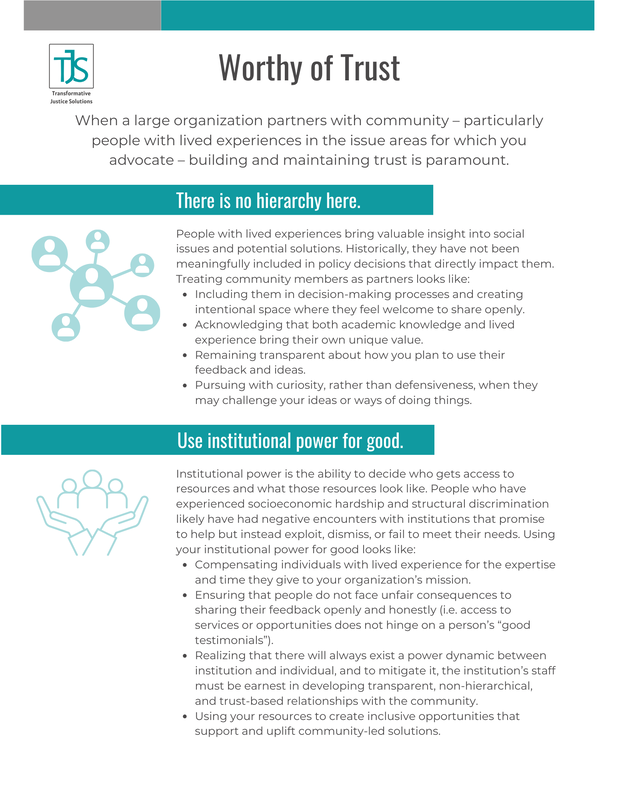


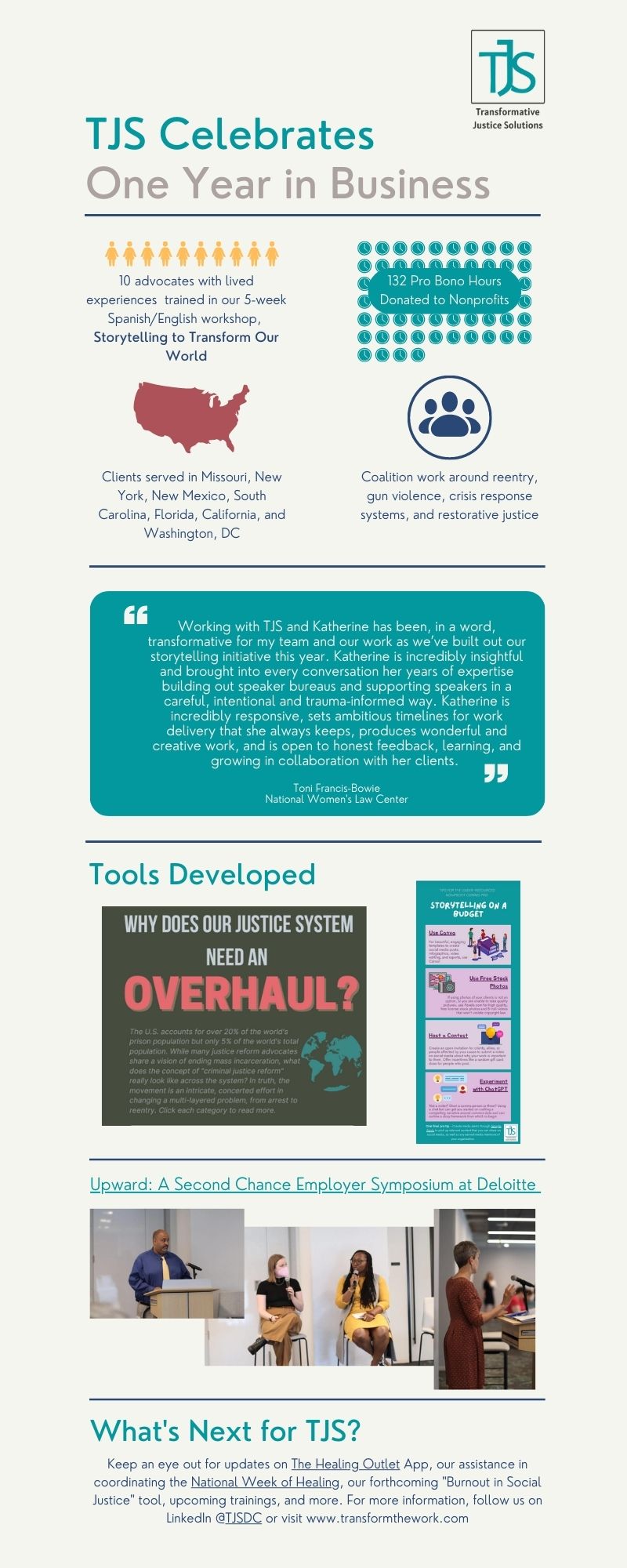

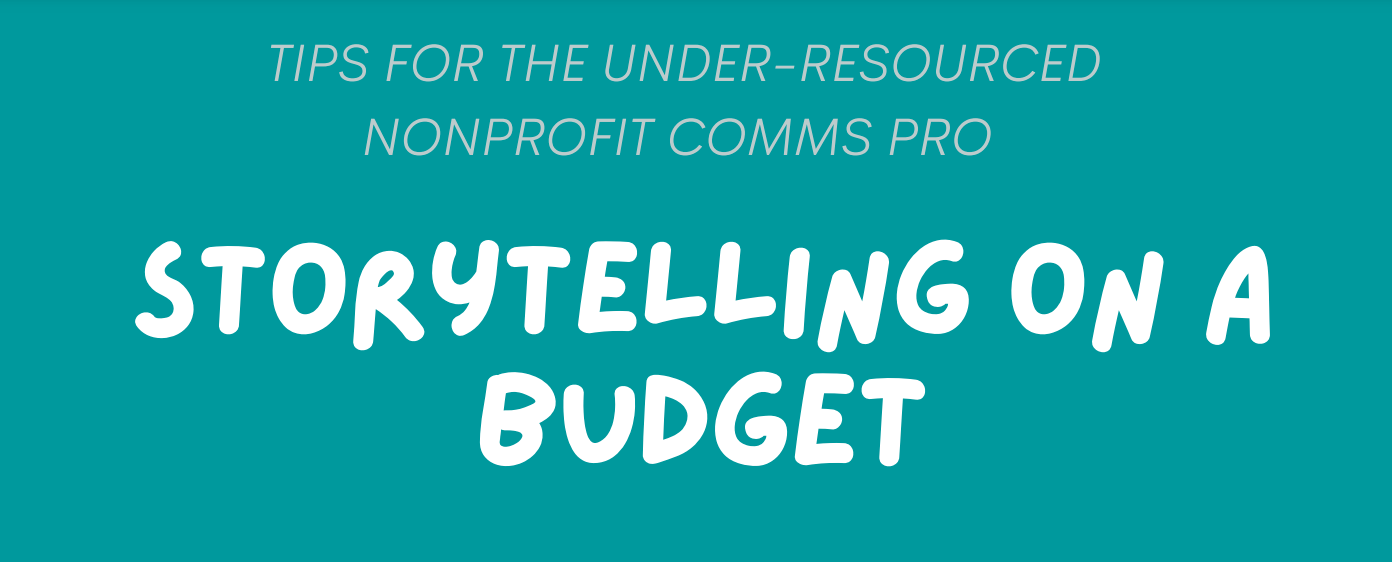



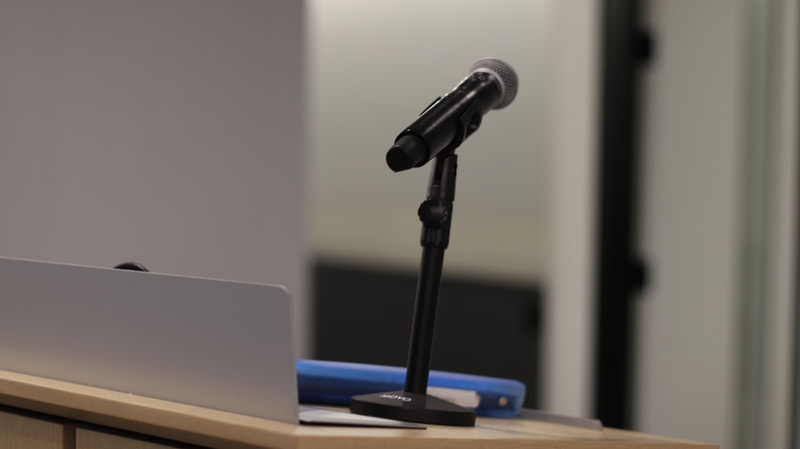
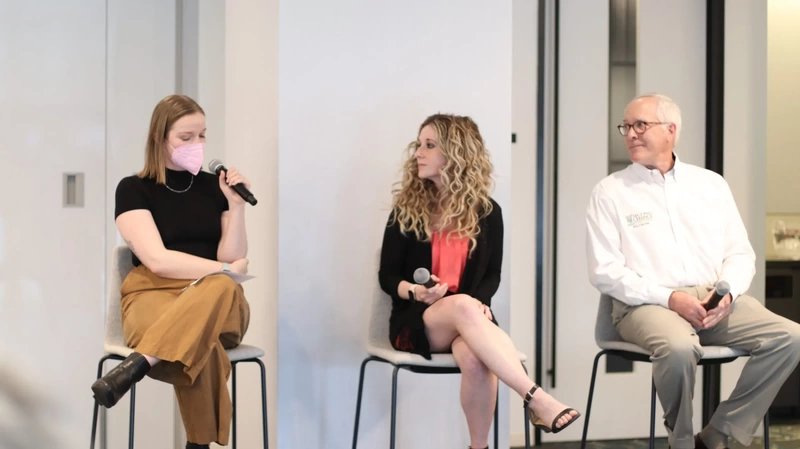
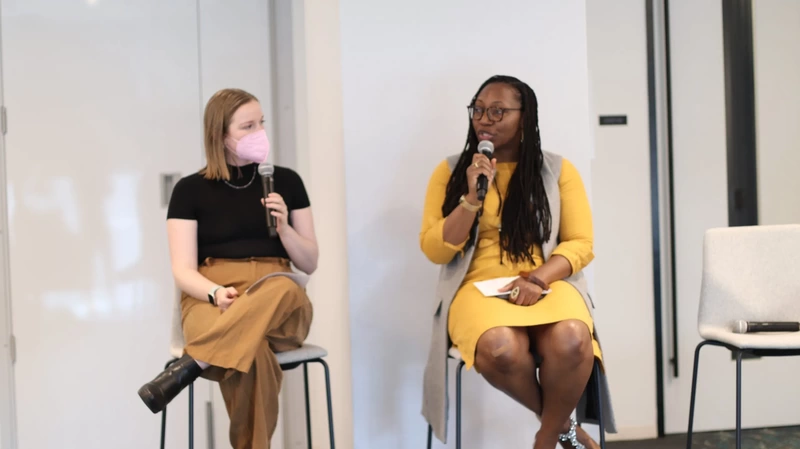
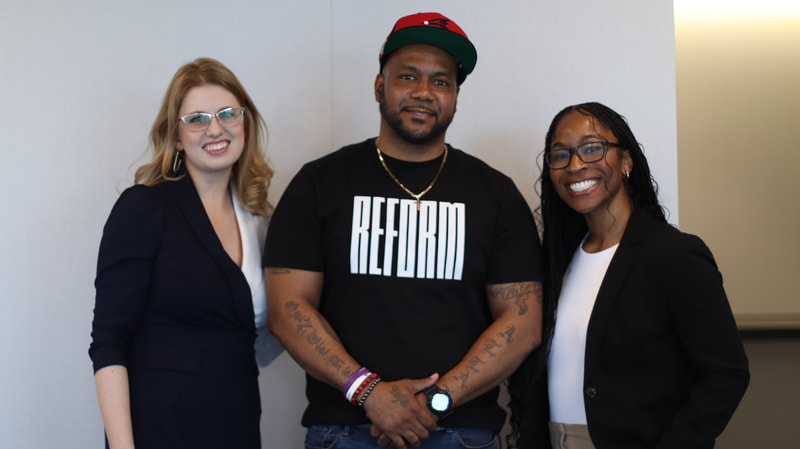
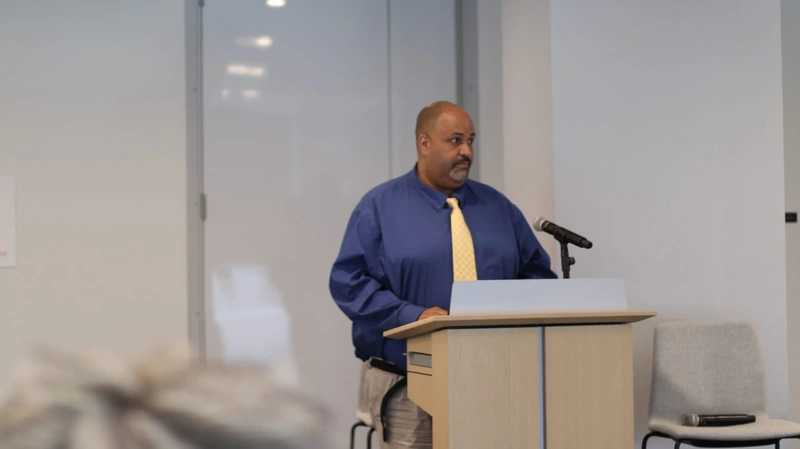
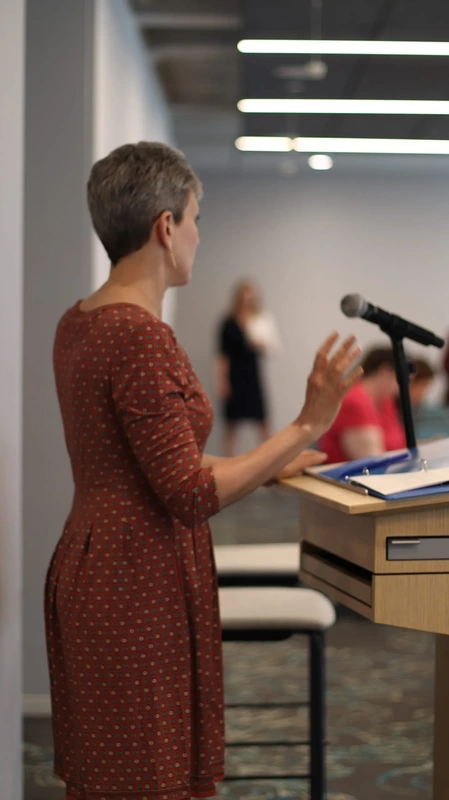

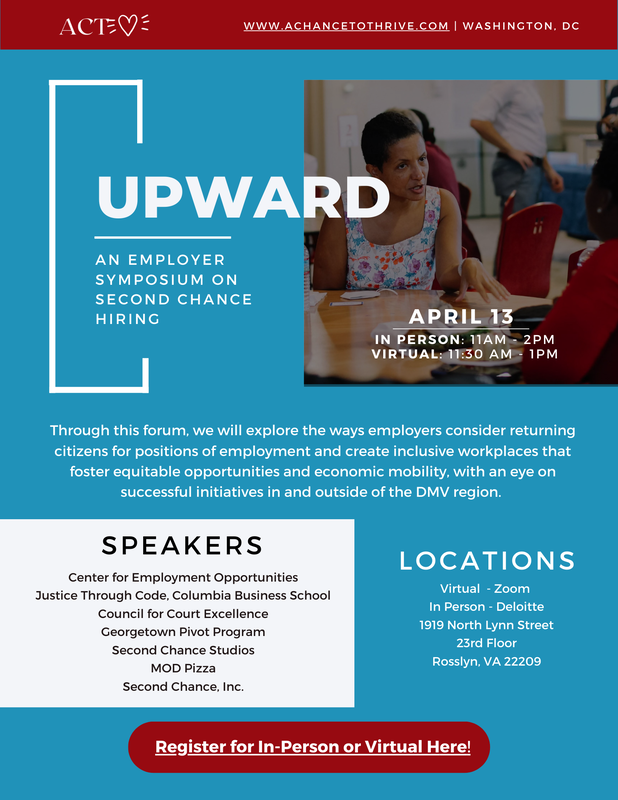


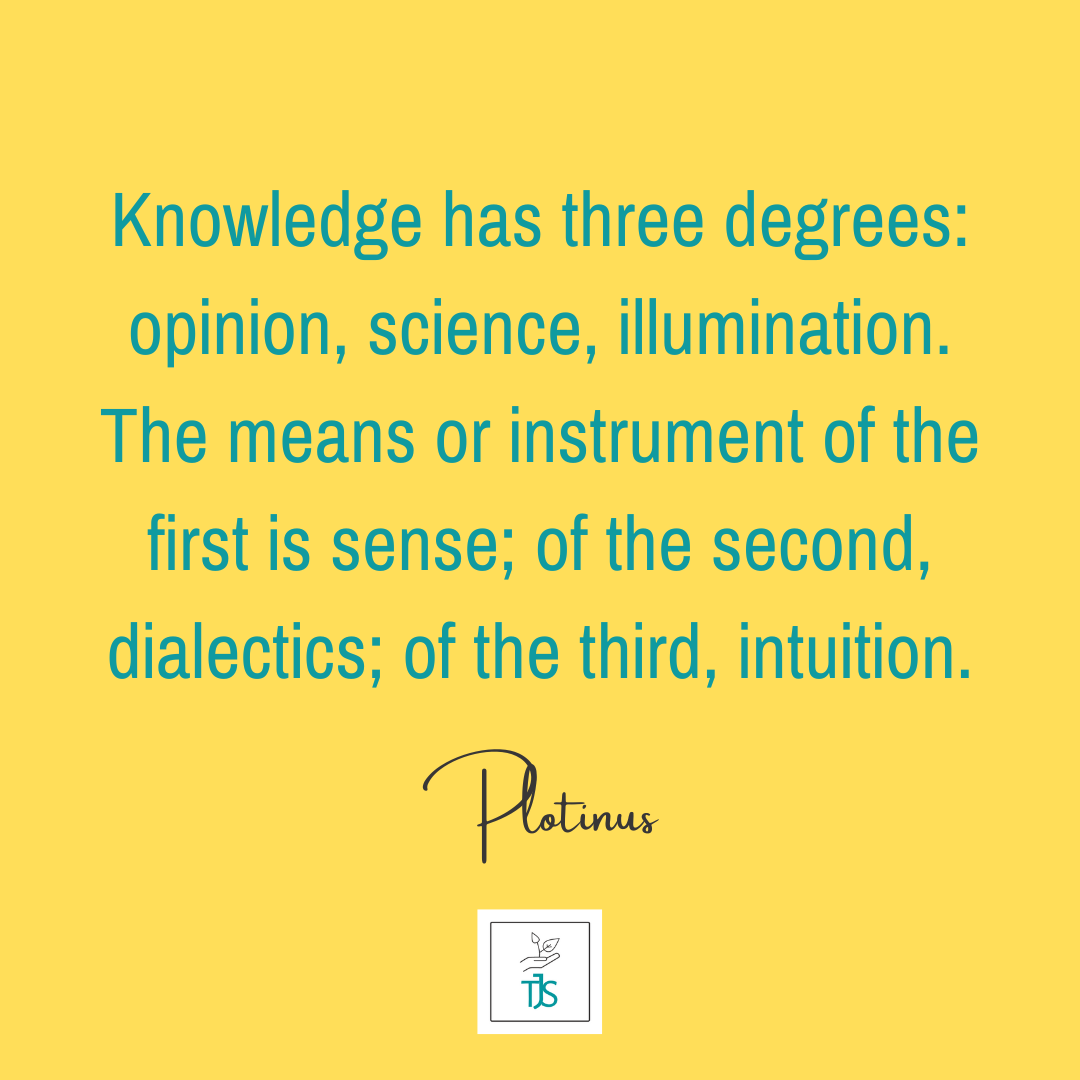



 RSS Feed
RSS Feed